|
|
Post by mantisboy on Nov 10, 2021 20:30:55 GMT -8
Is there an approximate (time frame) when it was noticed by enthusiasts/ coleopterists that the species was in severe decline ? Was it noticed in the 1960s, 1970s ?? It seems the species had declined substantially by the 1920s. The Passenger Pigeon hypothesis, combined with the usual suspects (habitat loss, light pollution, pesticides) are likely to blame, but the Passenger Pigeon decline is really the only explanation that suggests why other burying beetles haven’t experienced similar declines, as all other U.S. species use substantially smaller “prey”. It also explains why ABB are still found in the plains states, as they never had Passenger Pigeons as a host source to begin with, as the birds were found in more forested habitats. |
|
|
|
|
|
Post by trehopr1 on Nov 10, 2021 21:28:36 GMT -8
N. americanus is certainly an enigma amongst North American beetle species. It is the largest, and most boldly magnificent species of all.
It was once widespread across the country from the plains to the East coast states. And considered common enough to be put in Zim's golden guide book of insects; where it's picture is featured.
Yet, something happened during the decade of the 60s or 70s to bring about its rapid decline.
In my own humble opinion, I feel the two biggest factors in its demise was our over-use of pesticides/herbicides on our crops, lawns, parks, and gardens as well as our increased and (ceaseless) land development.
I recall well as a kid (who grew up in the 1960s) that DDT was in widespread use through most or all of that decade only finally being banned in the early 70s. Yet, since its use we have still continued to develop and refine chemicals of all sorts to control insect pests and invasive weeds. And all of it winds up getting windblown into the adjacent environments.
Perhaps, this gravedigger was a specialist (of a kind); however, its former wide range seems like it should have afforded it some measure of stability. Yet, here we are now with only four or five known (localized) populations.
I remember in the mid-1990s a curator at my museum where I worked told me there were only 2 known populations at that time !
|
|
|
|
Post by trehopr1 on Nov 10, 2021 21:35:01 GMT -8
I remember him also mentioning that one of the two populations (at that time) was located on Block Island / Rhode Island in block Island sound.
|
|
|
|
Post by mantisboy on Nov 10, 2021 21:58:22 GMT -8
Here are some photos of one of my favorite beetle species, Cicindela scutellaris! This is a fairly common species in upland sandy areas throughout much of North America where they vary widely by region, with many named subspecies. I have all the subspecies represented in my collection, but as I usually take photos of live individuals, I’ll just be posting photos of the varieties I have collected myself… 1. Cicindela scutellaris lecontei: This subspecies is found throughout the Midwest, and the one I grew up with in Wisconsin. Despite its comparatively dull coloration, it is one of the more variable subspecies, both in color and in the extent of the white markings. The third photo with expanded maculations coalesced to form a marginal band used to be a different subspecies, ssp. criddlei, which is found along the northwestern edge of the species’ range. 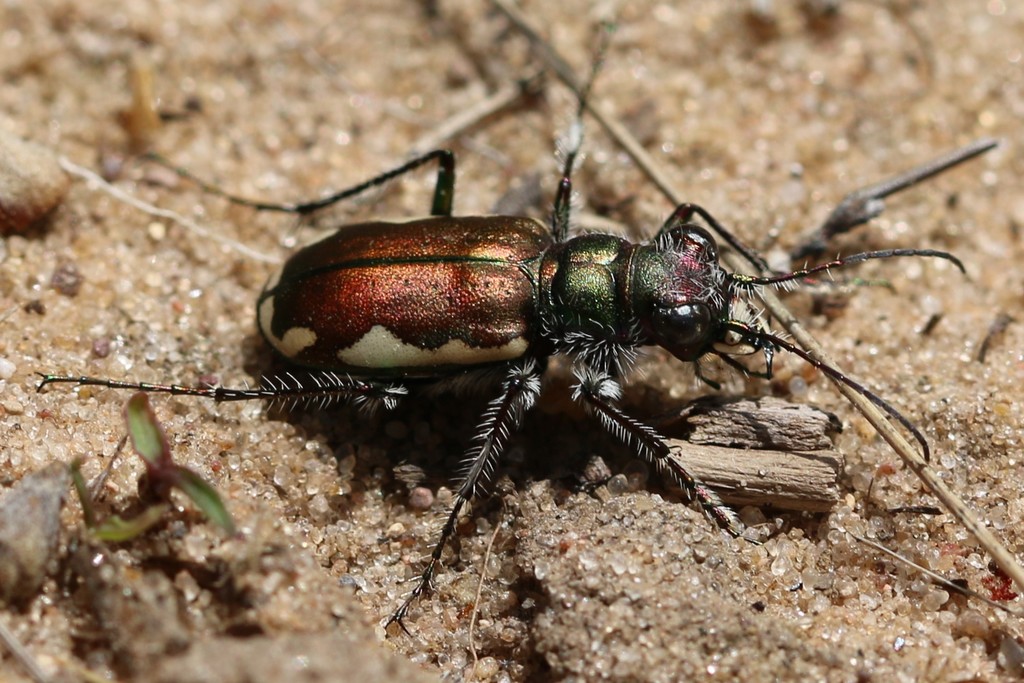 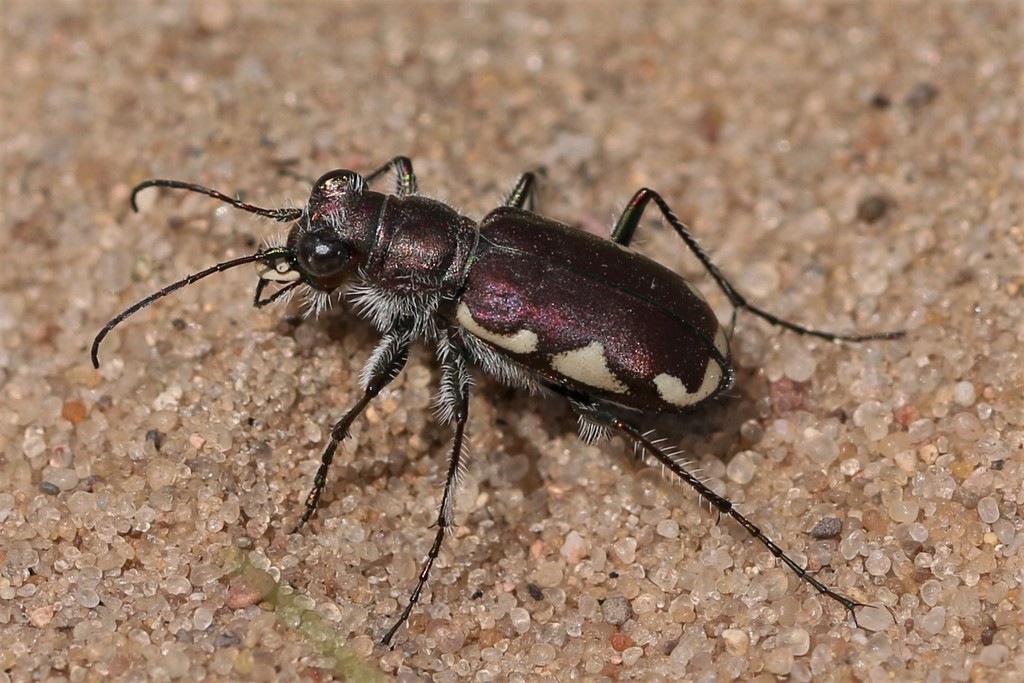 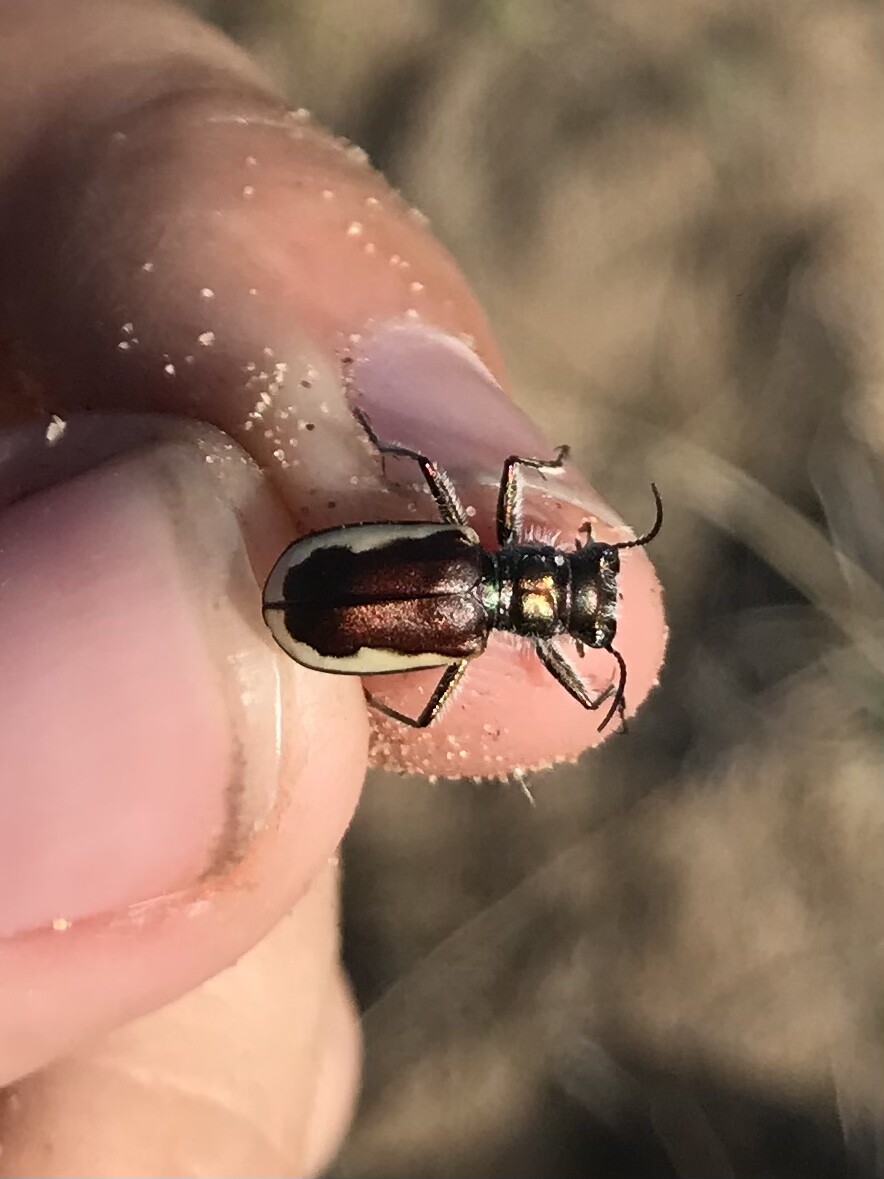 2. Cicindela s. scutellaris: Found throughout the Great Plains, characterized by a bright green/blue head and pronotum and red elytra. Second photo is of a unique form endemic to a single mountain range in Wyoming. 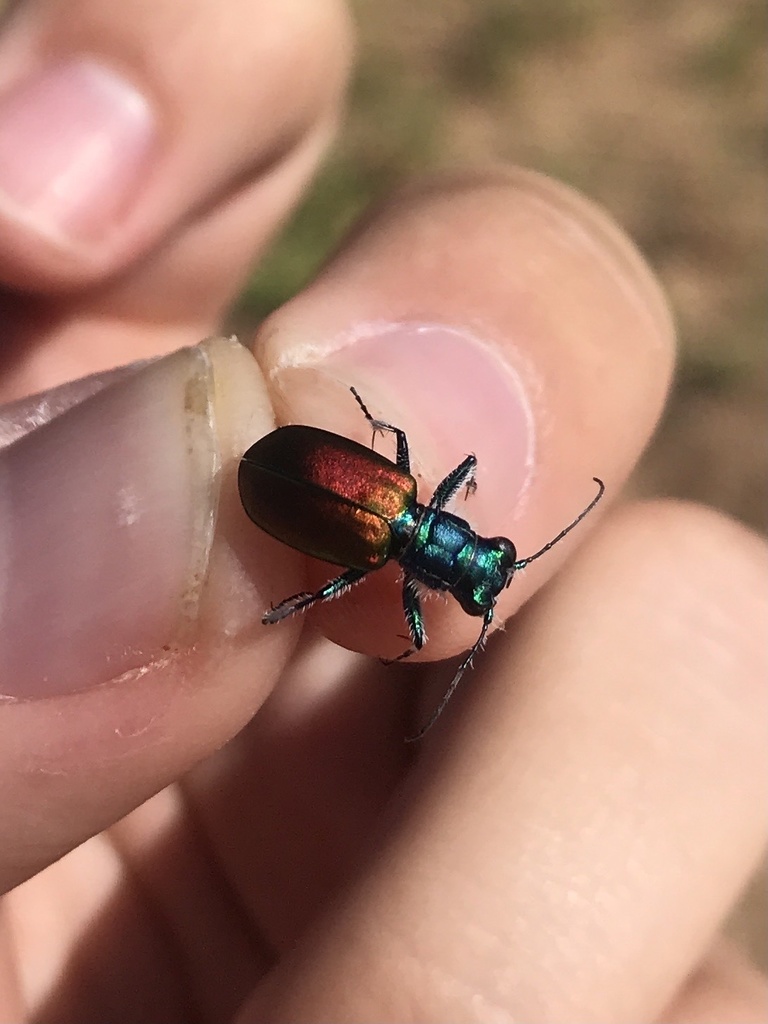  3. Cicindela s. unicolor: A blue/green subspecies found in the southeast, particularly common in Florida. 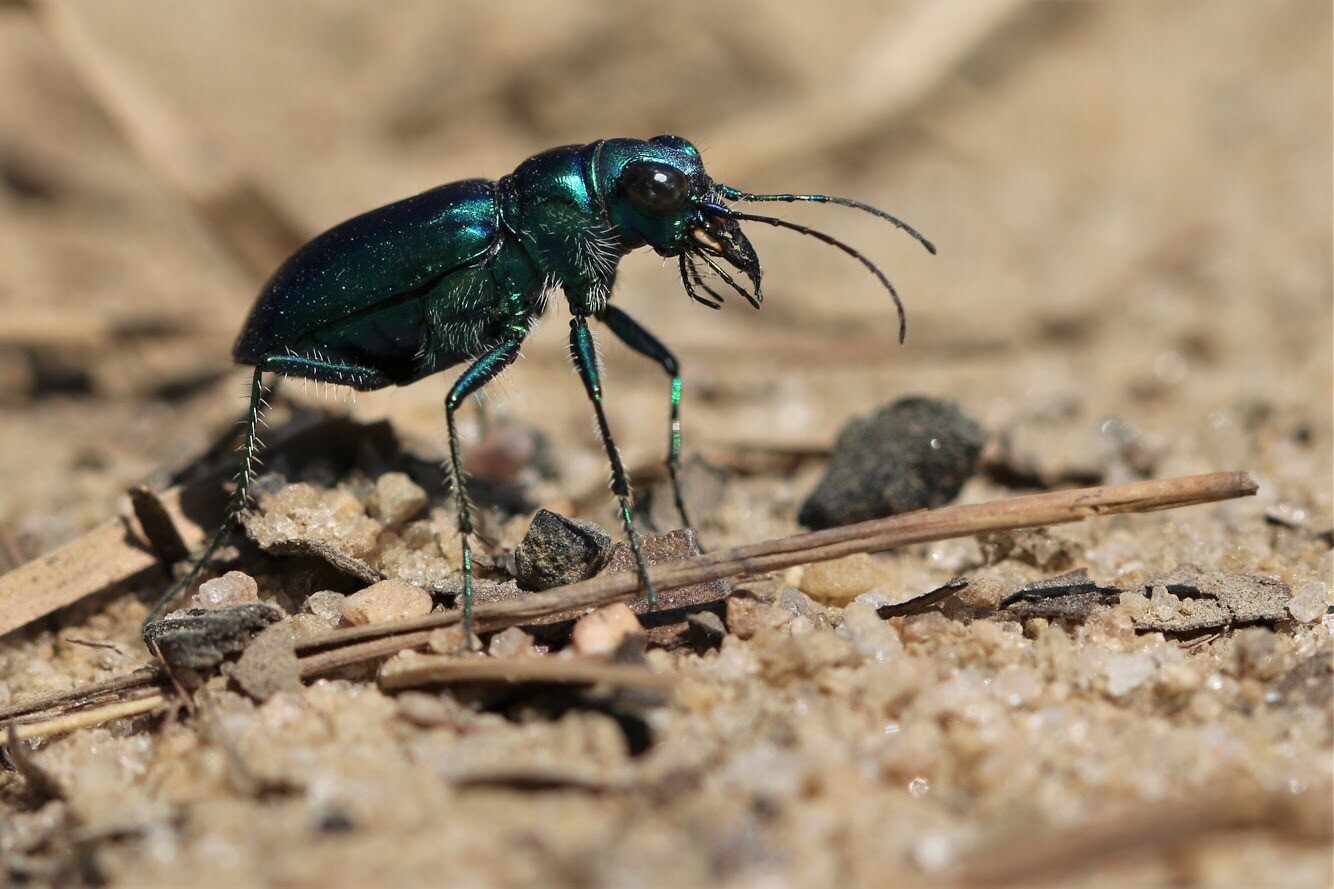 4. Cicindela. s. rugata: A blue/green subspecies very similar to unicolor, but found in eastern Texas and adjacent Arkansas. 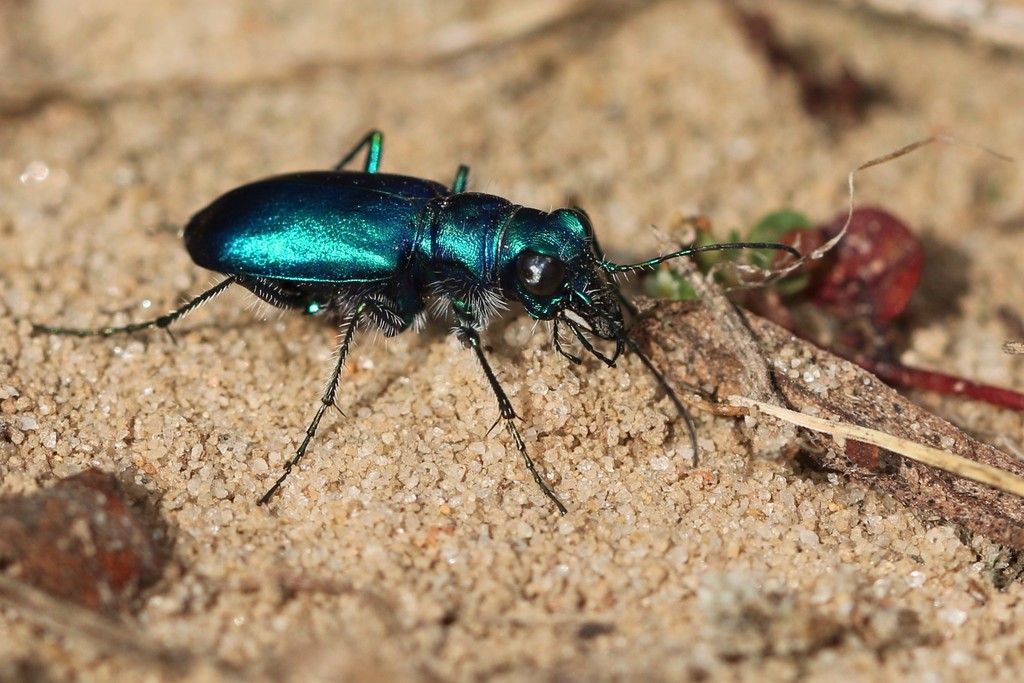 5. Cicindela s. flavoviridis: A bicolored subspecies, with blue-green head and pronotum and yellow-green elytra. Found in north-central Texas: 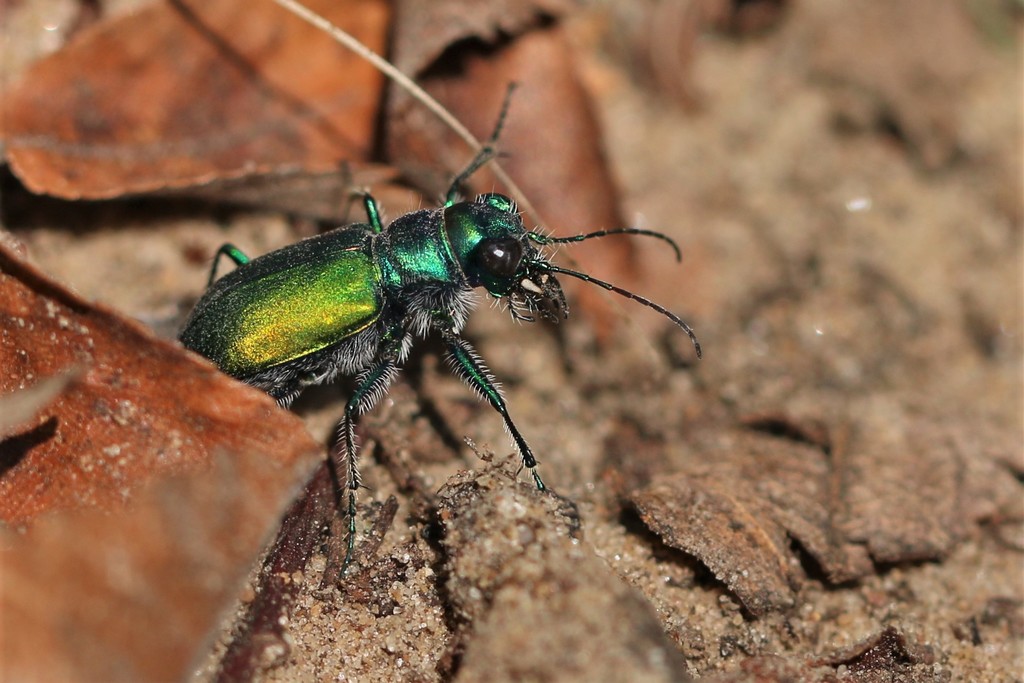 6. Cicindela s. scutellaris x flavoviridis: Beetles throughout most of Oklahoma exhibit intermediate characteristics between the nominate subspecies and subspecies flavoviridis, resulting in some really beautiful beetles! 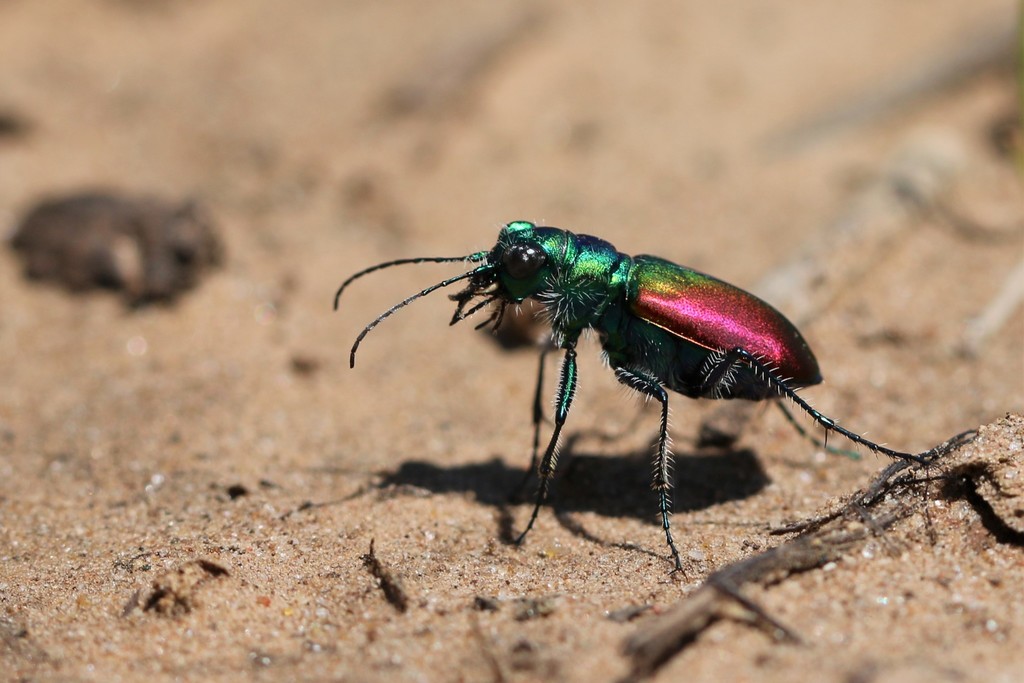 Just need to self-collect yampae (Moffat County, Colorado) and rugifrons (east coast pine barrens) and I’ve got them all! |
|
|
|
Post by bandrow on Nov 11, 2021 19:39:40 GMT -8
I've always considered Cicindela scutellaris scutellaris to be the finest U.S. tiger beetle. A close second is Cicindela pulchra - which I finally collected myself in Kansas in 2015. The third for me is Cicindela dorsalis - not only beautiful, but one of the hardest to catch, in my experience - it's like chasing ghosts on the beach! And fourth - are all the rest!!
Cheers!
Bandrow
|
|
mikeh
Full Member
  
Posts: 207
|
Post by mikeh on Nov 15, 2021 16:47:43 GMT -8
Here are a few fun US beetles Megacheuma brevipenne from Colorado  Elatotrypes hoferi from Colorado  Tragidion densiventre from Arizona  Stictoleptura canadensis from Colorado  Calloides nobilis from Utah  Neospondylis upiformis from Utah  Trichodes simulator from Utah  Alaus melanops from Wyoming  |
|
|
|
|
|
Post by 58chevy on Nov 16, 2021 8:47:30 GMT -8
Nice beetles! Keep the pictures coming.
|
|
kkarns
Junior Member
 
Posts: 33
|
Post by kkarns on Nov 17, 2021 14:36:46 GMT -8
You have some wonderful rarely collected longhorns in the mix! Nice...
|
|
|
|
Post by eleodes on Jan 5, 2022 15:19:28 GMT -8
|
|
kkarns
Junior Member
 
Posts: 33
|
Post by kkarns on Jan 6, 2022 13:19:54 GMT -8
Never get tired of looking at beetle pictures...nice photos!
|
|
|
|
Post by eleodes on Jan 8, 2022 17:41:12 GMT -8
|
|
|
|
Post by Entomofou on Jan 9, 2022 17:08:25 GMT -8
|
|
|
|
Post by exoticimports on Feb 1, 2022 16:14:28 GMT -8
|
|
|
|
Post by tv on Feb 4, 2022 11:09:10 GMT -8
Those tiger beetle photos are amazing, especially considering how elusive they are to catch. What kind of setup are you using for those photos?
|
|